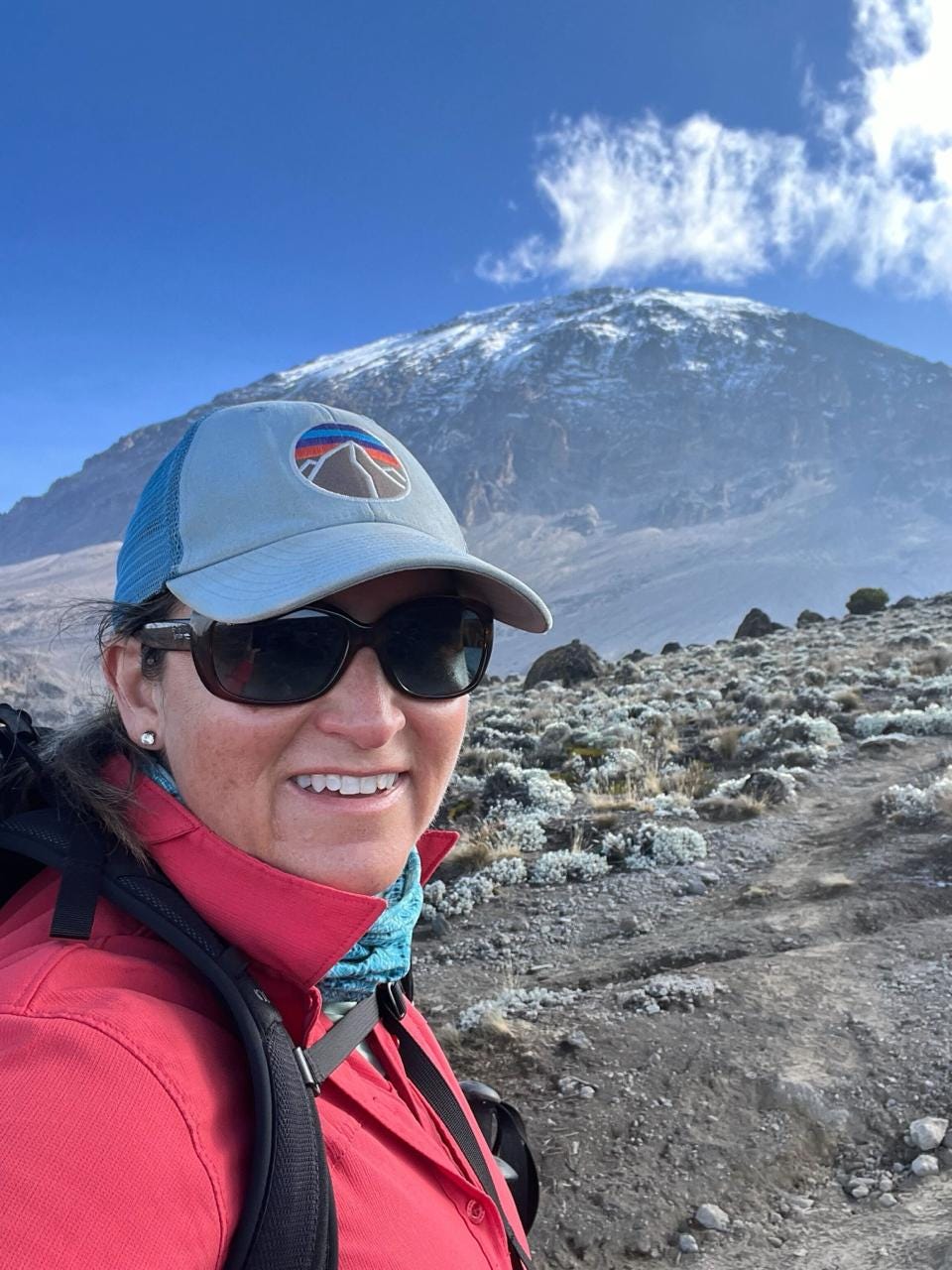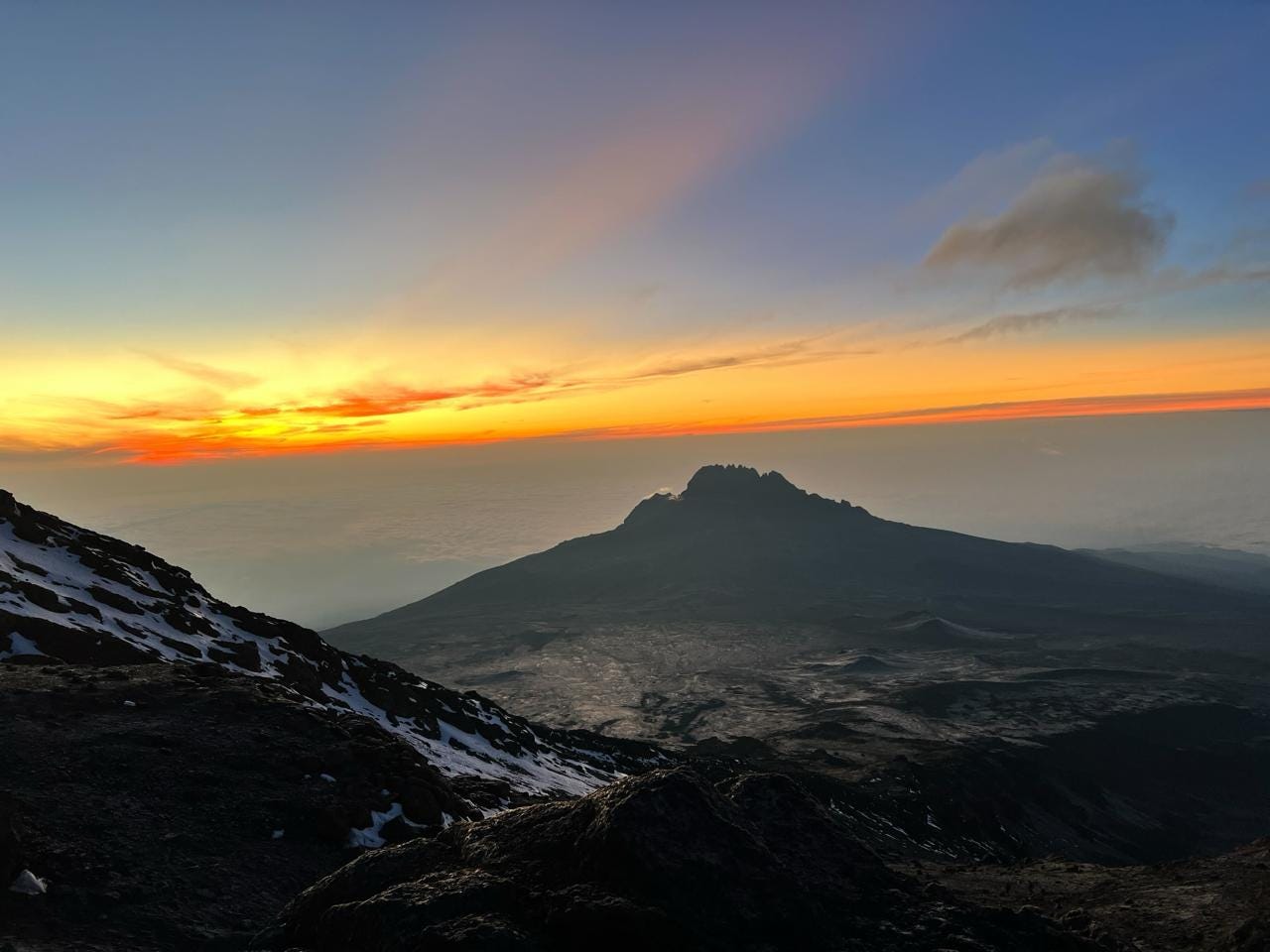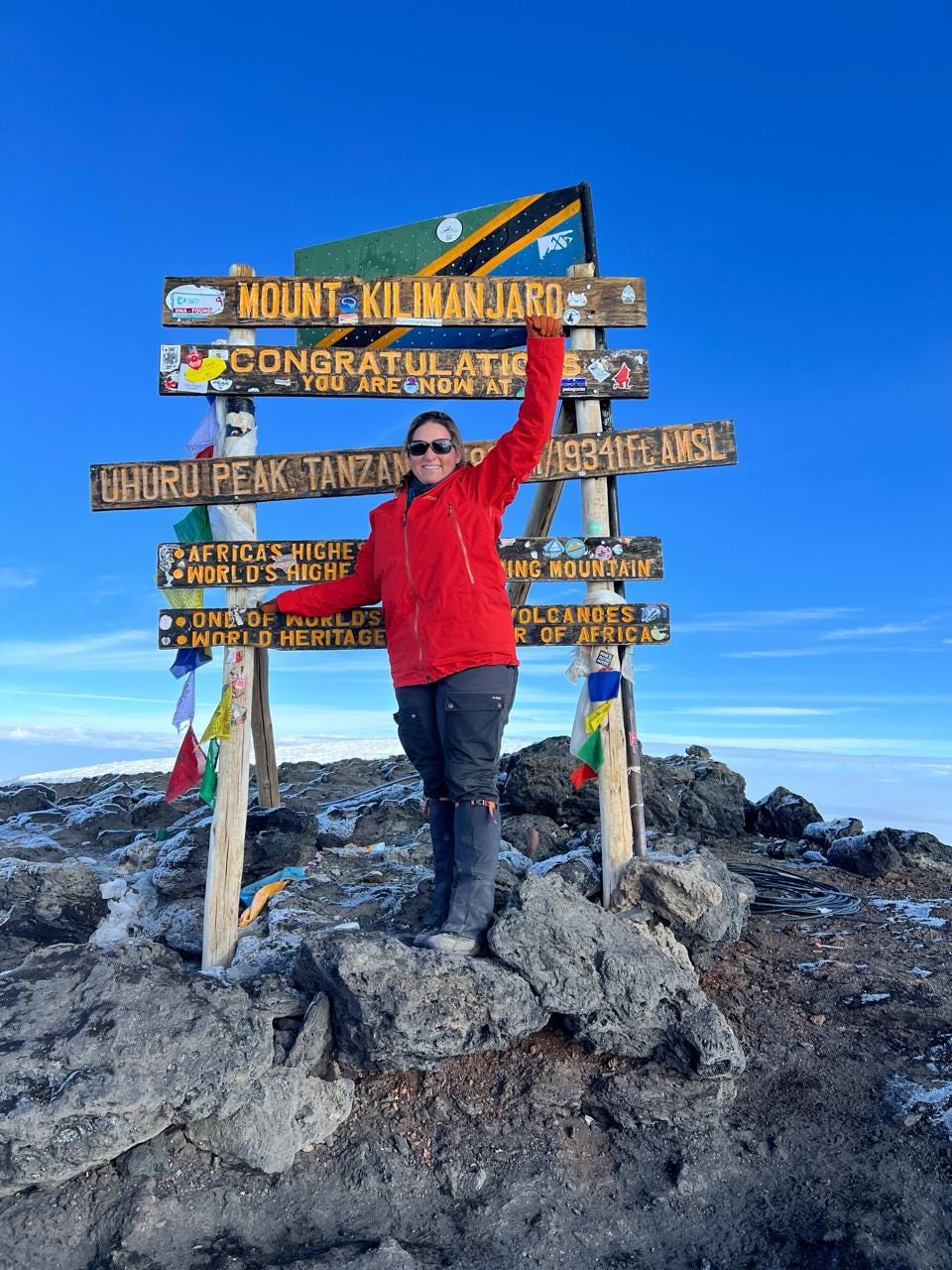Rebekah Sanderlin is a writer, marketing strategist and copywriter, and a former (and still sometimes) journalist based in Virginia Beach, Virginia.
Rebekah here. Every year, about 35,000 people attempt to climb to the top of Mount Kilimanjaro. At 19,341 feet, it’s the highest peak in Africa, and widely considered the most approachable of the seven summits for adventurers who lack technical climbing skills.
Still, about half of the people who attempt to reach the summit will fail to get there and, on average, 3 to 10 of them will die trying. Among those who do make it to Uhuru Peak, the climb is an absolute beast of an experience.
Why is This Interesting?
My husband and I just finished the climb, which is totally worth doing if you’re at all inclined. The feeling of accomplishment and sense of community shared by everyone on the mountain is exhilarating. Everyone, from everywhere in the world, encourages each other, especially when you’re near the summit. And as difficult as summiting was, it’s still a whole lot easier than Everest. If you’re curious, here’s how we did it—in chronological stages, and with some tips…
Choosing Your Guides
Though it’s possible to show up and just climb the mountain on your own—Swiss alpinist Karl Egloff did it in a mind-blowing 6 hours and 56 minutes—hardly anyone does that. For most people, it’s a multi-day journey, and that means climbers need support: namely food, water, and a tent to sleep in. Hiring an outfitter and porters to provide support, as well as guides to lead the way, is affordable, safer, and makes for a much more enjoyable journey, and that’s what the vast majority of climbers choose to do.
It's worth noting that the Tanzanian government limits each porter to carrying 33 pounds. This is why, for our group of just two climbers, we had a crew of 15 people assisting us – two guides, a chef, a waiter, a man to manage our portable toilet (the best $250 expense ever), and 10 porters. We felt ridiculous having such a huge crew for the two of us, but not only is that a standard sized team for the trek, it also provides much-needed jobs for people in an impoverished part of the world. And that 33-pound limit is as much for the porters’ safety as it is to provide jobs for more people.
Route Selection
Climbers select the route and length of days they want to climb. With eight possible paths to choose from, climbers are balancing the number of days they can commit to the journey with their odds of success. Some routes have higher success rates, better scenery, and smaller crowds than others, and the more time you spend on the mountain, the more likely you are to make it to the summit. Why? Because the vast majority of climbers who fail to reach the summit (or die) do so because they develop Acute Mountain Sickness and can’t continue. The best way to prevent AMS is by acclimatizing to the altitude, and the more days you’re on the mountain, the better acclimatized you’ll be.
We chose a seven-day journey on the Lemosho Route – a less crowded, more scenic route, with a great acclimatization profile. Though the eight-day option has a slightly better success rate, it wasn’t better enough to justify the extra day for us. At the same time, the success rate for seven days was markedly better than the five- and six-day options. For us, seven days was the sweet spot.
The Climb
For the first four days, the climb itself was beautiful and highly enjoyable. Twice each day our guide assessed our health and checked our pulse and oxygen saturation levels. We never had any health issues.
The fifth day was our summit day – and absolutely nothing about summit day was enjoyable. The summit climb is over 4,000 ft – a huge amount of vertical space to cover in just one day. We started climbing at midnight with headlamps on, when temps were around negative 30 Fahrenheit. Some of the other climbing teams started at 10 pm, so when we started and made the mistake of looking up toward the peak, all we could see looking straight up into the sky was a snaking trail of headlamps, as far as we could see. (The only consolation was that all we could see behind us was a snaking trail of headlamps, too.)
As the altitude increases, it gets harder and harder to breathe and, with a trail so steep, your legs get very tired. I found myself having to frequently stop to catch my breath. In addition, the trail is littered throughout with human feces and vomit. We finally reached Uhuru Peak – stumbling and exhausted – after 7.5 hours. It’s impossible to explain the intensity of the emotions we experienced then: exhaustion, joy, incredulity. But, because the air is so thin, we were not tempted to linger for long. Like everyone else, we snapped our pics and quickly began our descent.
The Descent
The descent is yet another challenge. It took us five hours to get back to our summit camp—I dislocated my right knee and developed blood blisters under my toenails and had to hobble down most of the way using my trekking poles like crutches.
During the descent, we also began seeing everyone who had not fared as well as we had. Many climbers were being carried down the mountain by their guides and porters. Medevac helicopters circled and landed constantly, carrying away people who wouldn’t, or couldn’t, get down on their own power. People were being carried on stretchers and some were piggybacked down by their guides. My own struggles, frequent breaks, and bum knee and feet no longer seemed so bad.
We had a one-hour nap at the summit camp, then our team got us up and moving again. Our campsite was needed for the next day’s summiteers, even if—after 12.5 hours of very difficult hiking—we had to hike another five hours to our next camp. The next day we woke early to hike yet another seven hours down to the end of the trail—where our incredible team had another delicious meal (and a chilled bottle of champagne) waiting for us.
—
Thanks for reading,
Noah (NRB) & Colin (CJN) & Rebekah (RS)
—
Why is this interesting? is a daily email from Noah Brier & Colin Nagy (and friends!) with editing help from Louis Cheslaw about interesting things. If you’ve enjoyed this edition, please consider forwarding it to a friend. If you’re reading it for the first time, consider subscribing.







Behold! Congratulations are in order. Well done!